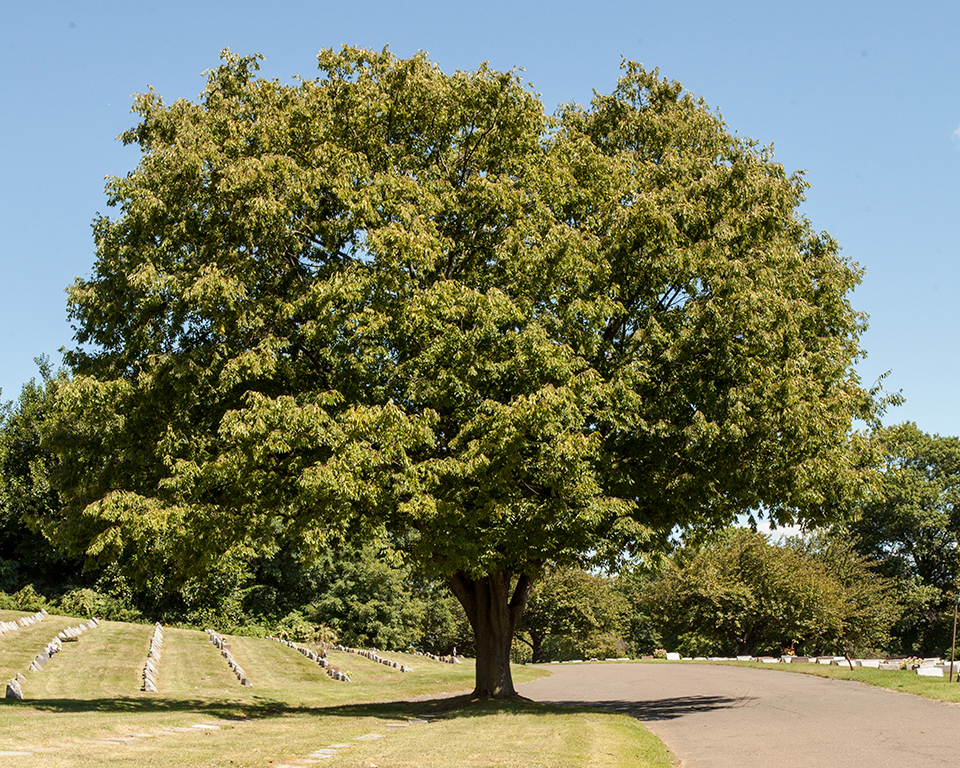ZELKOVA SERRATA – ZELKOVA, JAPANESE

The tree will tolerate most soil types, including those with a pH to about 7.8, but prefers a moist deep loam. It transplants best in spring. Established trees are fairly drought-tolerant, requiring little irrigation unless located in sandy soil. It makes a wonderful street and shade tree and is almost pest free. A nice canopy over the street will form with trees planted on 30-foot-centers. Trees perform well along streets and in parking lot islands but they grow to be quite large.
Purchase trees with branches spaced along the trunk so they can develop a secure hold onto the trunk. These will be hard to find but insist on it! Some growers are making an effort to produce better quality trees and have come to understand that shortening branches growing within several inches of main branches allows the main branches to dominate, producing a better quality structure.
Included bark always develops in the crotches of main branches and co-dominant limbs, especially on those that branch close to the ground. This is a potentially dangerous condition because these limbs can break from the trunk latter. Subordinate those limbs aggressively so that those without included bark can grow to be the main limbs on the tree. It is very difficult to prune this tree into a strong structure. Yearly or every-other-year pruning may be needed for the first 10-15 years after planting. Zelkova produce highly allergenic pollen.
‘Schmidtlow’ has atypical red fall color and is wider than tall. The tree grows slower than other zelkovas so may be suited for small spaces in urban landscapes. Foliage summer nitrogen content on established trees in irrigated landscapes in California ranged from 1.8-2.8 percent.

